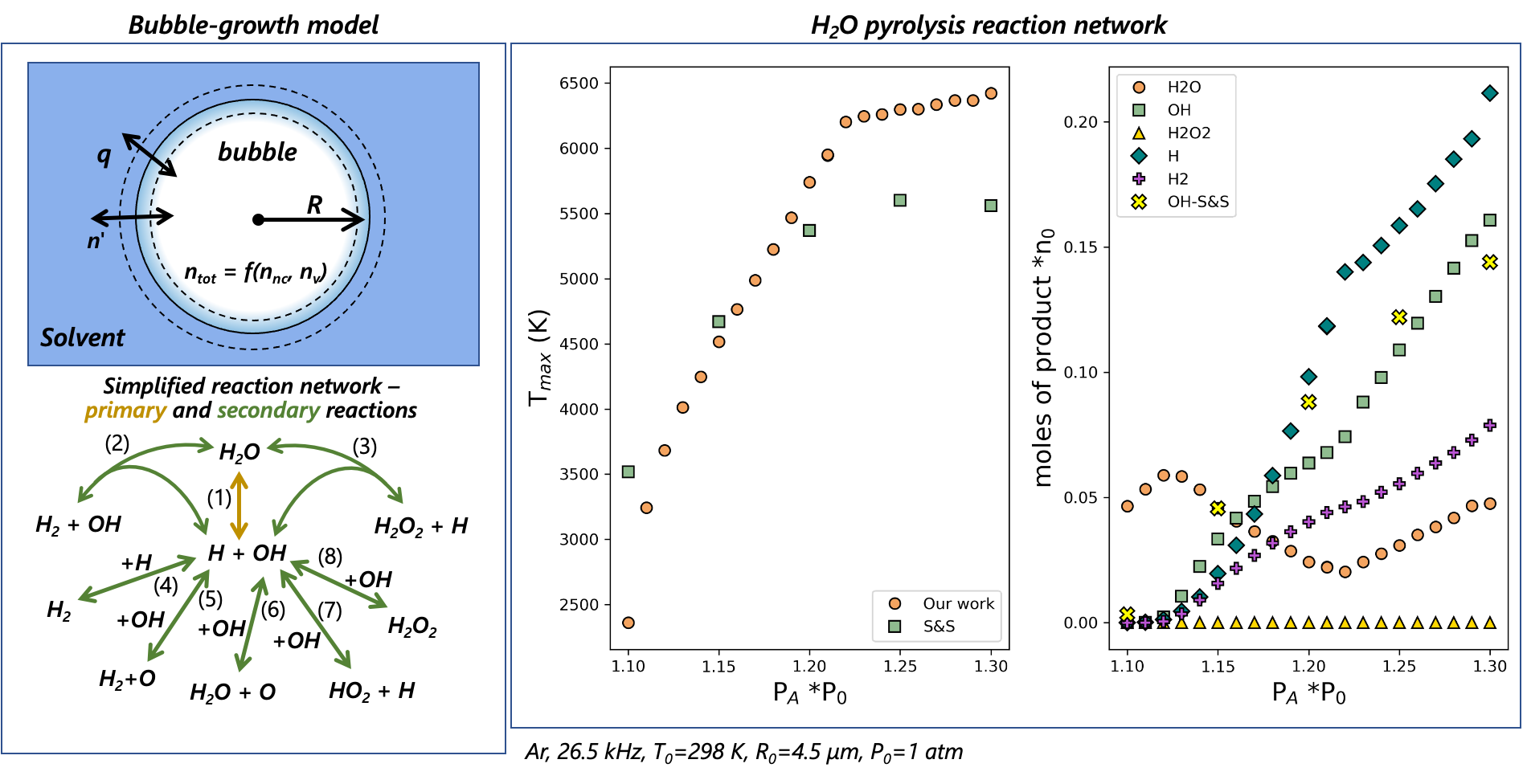The depolymerization of cellulose into functional molecules is a crucial step towards integrating renewable feedstock into the chemicals sector. Such processes occur at elevated temperatures in the presence of acids. Recent studies showed that cavitation phenomena induced by high frequency ultrasound irradiation can depolymerize cellulose to glucose at 348 K. Experimental titrations indicate that this depolymerization is driven by hydrogen radicals generated
in situ during bubble implosion. The chemical effect of hydrogen radicals is analogous to protons, albeit under milder conditions. The concentration of radicals generated
in situ are a complex interplay of the ultrasound frequency, amplitude, bubble radius, temperature, and the gas composition. To enable the efficient design of sonochemical reactors, it is necessary to establish quantitative correlations between the radical concentration and these operating conditions. We present generalized trends connecting the concentration of radicals released during ultrasound irradiation with the operating conditions of sonochemical reactors. This model is inspired by a multiscale framework by Storey and Szeri
1. We simulate isolated bubbles of a pre-specified radius as batch reactors of variable volume. The bubble first isothermally expands before collapsing adiabatically. During adiabatic collapse, instantaneous temperatures and pressures reach ~5000 K and ~200 bar during which any water vapour entrained in the bubble is pyrolyzed into radicals. By linking the heat, mass, and momentum transport equations with a reaction network for water pyrolysis, we estimate the radical concentrations obtained at bubble collapse. We then determine broad trends connecting radical concentrations to the frequency (20 to 1000 Hz), amplitude (1 to 1.3 bar), gas composition, and bubble radius (10-100 micrometres). The model predicted radical concentrations are corroborated with titration experiments. Our framework will guide future reactor design efforts towards determining operating conditions that maximize the concentration of radicals that promote cellulose depolymerisation.
- Storey and Szeri, 2000, https://doi.org/10.1098/rspa.2000.0582.


